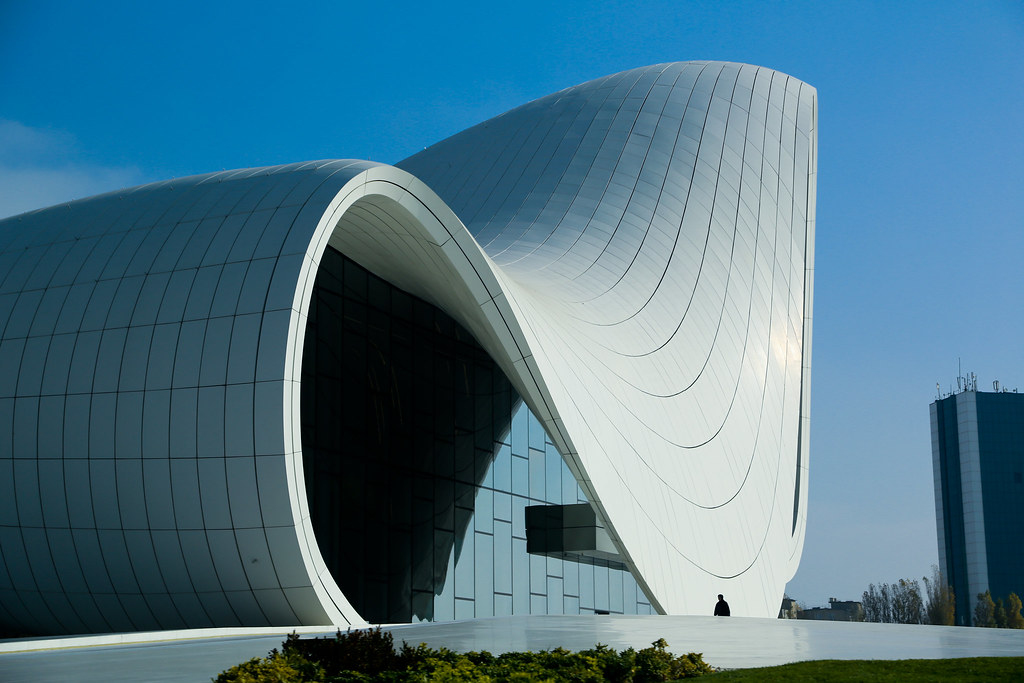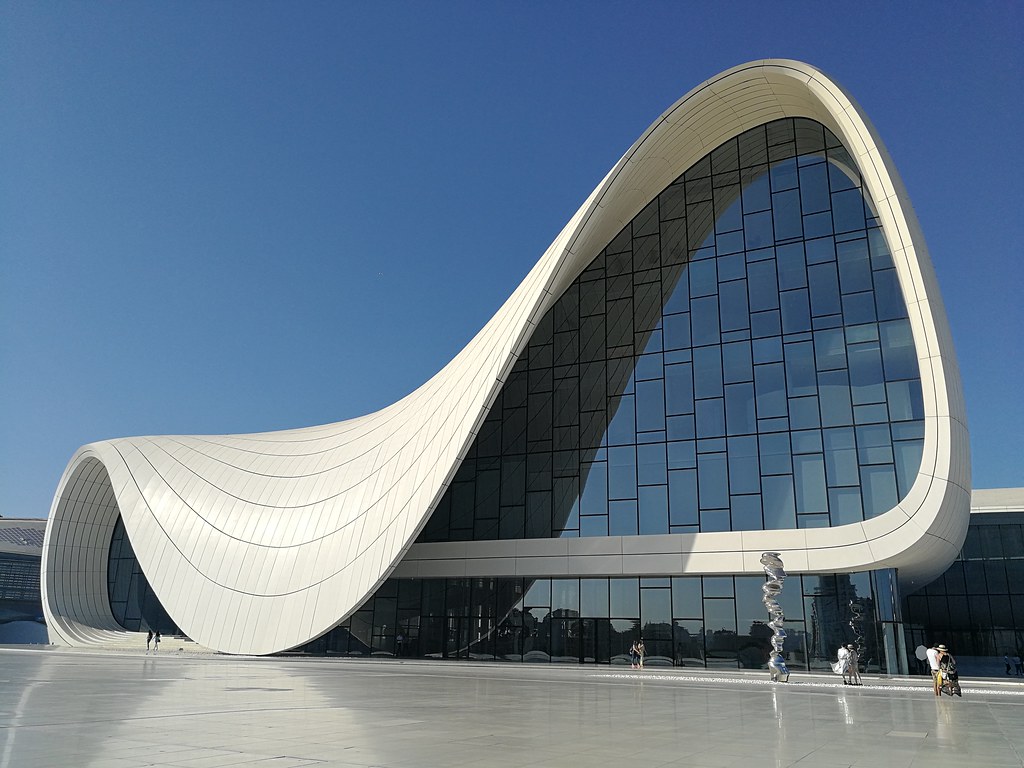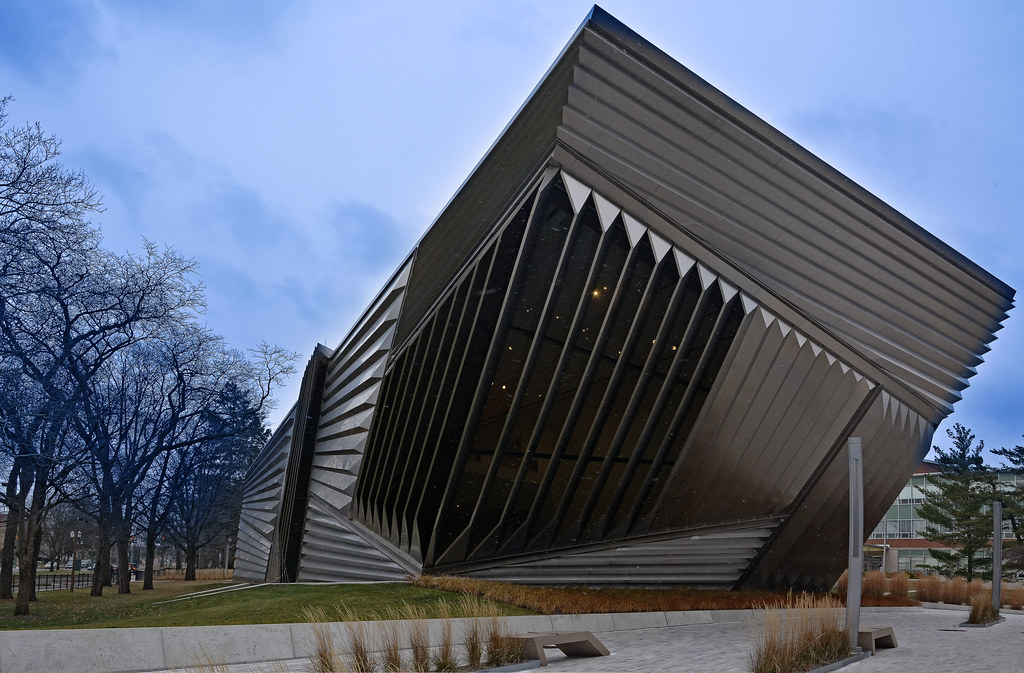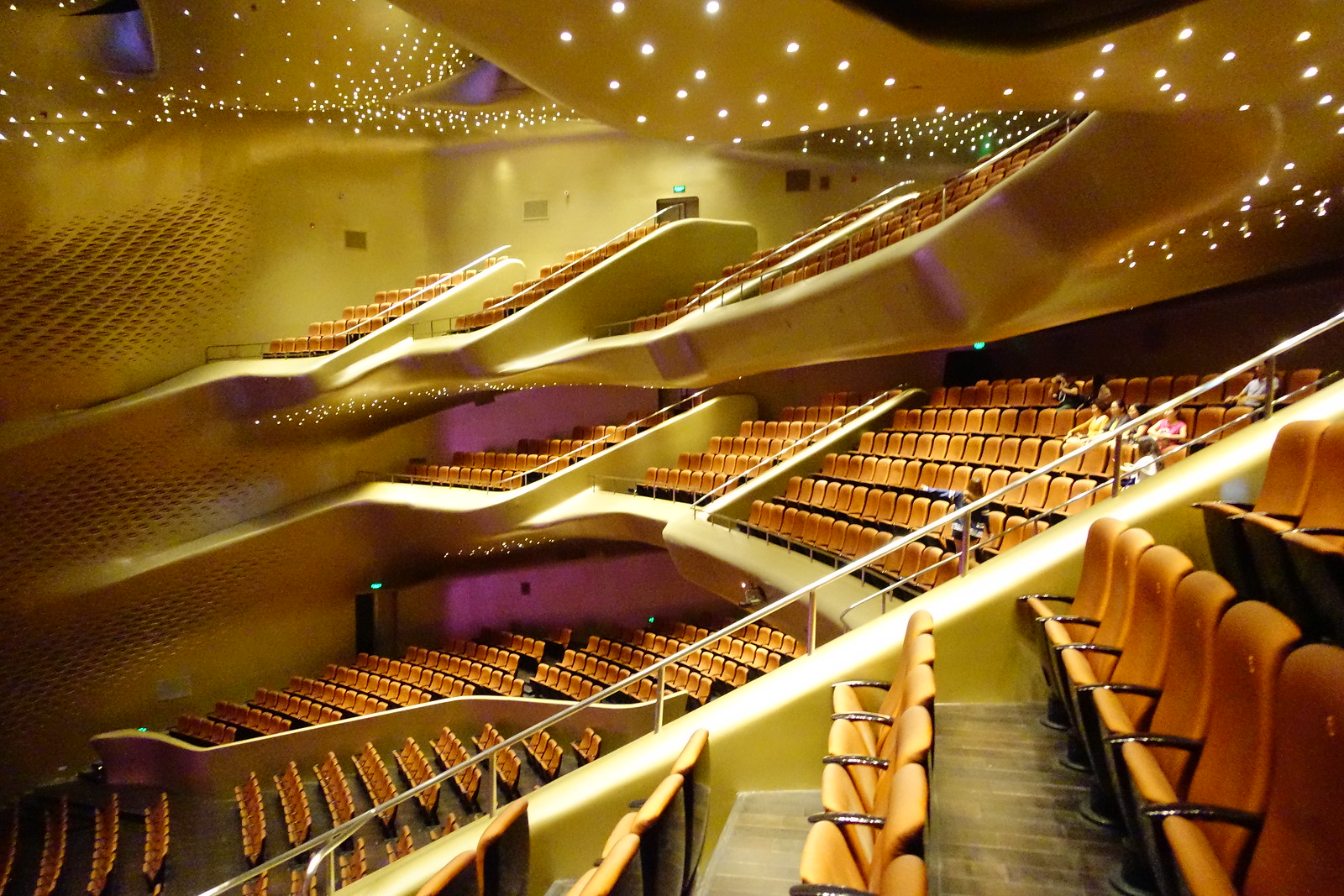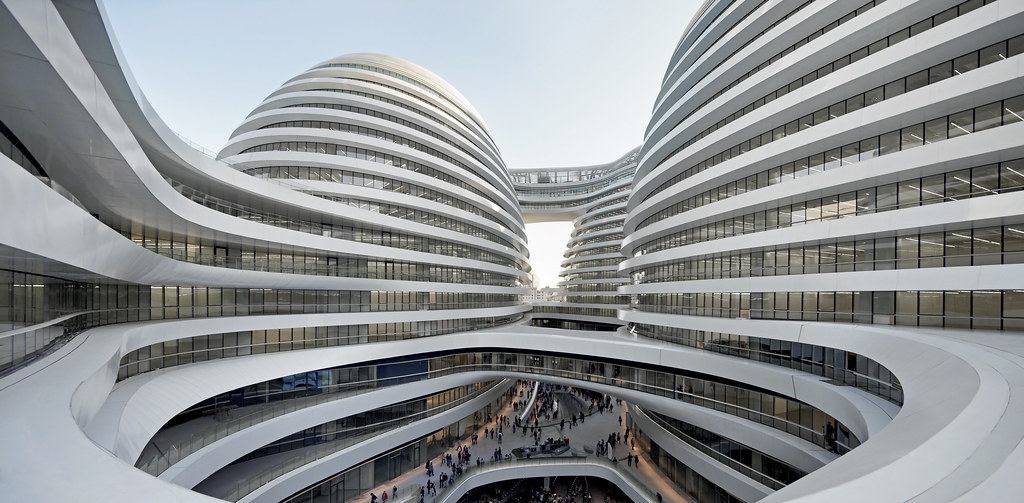Heydar Aliyev Center, Baku, Azerbaijan (2007–12)
The landmark design of the Heydar Aliyev Center in Azerbaijan demonstrates Hadid’s creativity at its best. At once elegant and innovative, the roof gently folds over itself, highlighting the curvilinear form of the building. 12,000 individual panels form the outer shell, which is broken up by a large facade peering out from beneath the building’s exoskeleton. In aiming to create a landmark in Baku, Hadid also produced one of her most successful designs. For her efforts, she was awarded the 2014 Design of the Year by London’s Design Museum—the first architectural project to ever win the prize.
Broad Art Museum, East Lansing, Michigan (2007–2012)
While much of Zaha Hadid’s work is concentrated in the Middle East and Asia, the United States boasts a few projects completed by the masterful architect. Her second project in America saw her create a contemporary art museum on the Michigan State campus. A combination of steel and glass, its sharp angular form is softened by the ever-changing shapes the pleated facade casts throughout the day.
Guangzhou Opera House, Guangzhou, China (2010)
One of the largest theaters in China, the Guangzhou Opera House sits perched on a river. In fact, Hadid conceived the structure as two rocks washed away by the water, and beat out her former professor Rem Koolhaas to win the commission. In this case, Hadid encased a freestanding concrete auditorium in a steel and glass shell. The New York Times called it “a magnificent example of how a single building can redeem a moribund urban environment.”
Galaxy SOHO, Beijing, China (2009-12)
Beijing’s Galaxy SOHO is a dual commercial and office center created from a cluster of four oval buildings topped by glass. The egg-shaped forms are connected by curving pathways that give a sense of continuous movement. Allowed to transition without barriers, Hadid invites the public into the dynamic, futuristic space. And with the circle functioning as a symbol of unity and perfection in China, subtle cultural cues are once again incorporated into her design.
Port House, Antwerp, Belgium (2016)
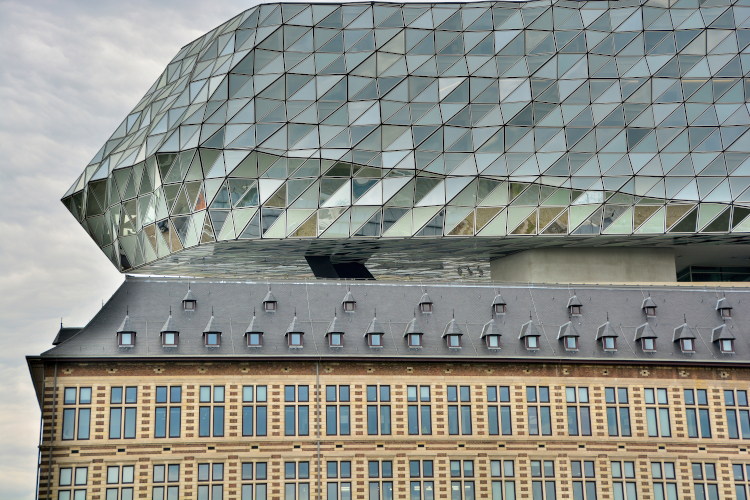
Photo: Stock photos by SBWorldphotography/Shutterstock
Even when working within the framework of a historical building, there was no limit to Zaha Hadid’s creativity. Meant to revitalize Antwerp’s port, a daring glass cloud is suspended over the traditional port building. The monumental work was one of 36 projects Zaha Hadid Architects had begun prior to Hadid’s death, with the building opening just a few months after her passing. One of her most ambitious projects, the sharp geometric form gives way to an airy, open interior flooded with light from the glass exterior.
Zaha Hadid Architects Today
Zaha Hadid Architects continues to thrive, both finishing Hadid’s projects, like the Leeza Soho in Beijing and Wetland Preservation Center in Saudi Arabia, as well as proposing new work. The firm, which has over 400 employees, runs under the guidance of principal architect Patrik Schumacher. Schumacher, who got his start at the firm while he was still an architecture student, was highly involved in all of Hadid’s most important projects. Certainly, there is no one better to carry out her legacy.
Want to learn more about what Zaha Hadid Architects have been working on? The book Zaha Hadid Architects: Redefining Architecture and Design focuses on projects designed both before and after the passing of this architectural genius.
Related Articles:
Google Doodle Honors the Creative Legacy of Architect Zaha Hadid
Zaha Hadid’s First Brazilian Building Design Resembles Vertebrae
Zaha Hadid’s Extraordinary 2022 FIFA World Cup Stadium
Zaha Hadid Designs Five Interlocked Wooden Buildings for Cambodian Genocide Research Center

